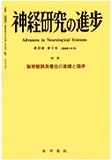Japanese
English
- 有料閲覧
- Abstract 文献概要
- 1ページ目 Look Inside
近年コンピューターの導入により,体性感覚誘発電位(somatosensory evoked response,以下SERと略記)の発達には目覚ましいものがある。一般に,SERの誘発には末梢神経の霊気刺激が用いられているが,電気刺激を用いた場合には,SERの最初180msecまでのcomponentは末梢神経では太い神経線維,脊髄では後索を上行するインパルスを反映していると考えられている。それは,脊髄半切障害(Brown-Sequard's syndrome)の際には,表在感覚障害側刺激では,対側の頭皮上より正常のSERが誘発されるのに,運動および深部感覚障害を認める側の刺激ではSERが誘発されない事実,および脊髄空洞症で痛覚などの表在感覚のみが障害された場合にはSERが正常に出現する事実からも考えうることである5,6)。また,先天性無痛覚症でも,電気刺激によるSERは正常所見を示し1,7),動物実験においても電気刺激によるインパルスが後索を上行することが知られている18)。すなわち,電気刺激を用いた場合には,痛覚などの表在感覚は反映されておらず,刺激した神経の種類を明確に知り得ない。また,電気刺激を用いる場合,通常末梢神経の比較的触れやすい部位が選ばれるので,刺激部位が限定されるきらいがある。かかる観点より,刺激としては,日常臨床感覚検査に用いられる針・筆などのより自然な刺激を身体各部に与えることが望ましい。
Since Dawson (1974) introduced the study of somatosensory evoked potentials in man, a lot of information has been collected. Most studies of this kind were based on electrical stimulation of mixed peripheral nerves or of sensory nerves in the fingers. When the electrical stimulation is used, the impulse is supposed to travel by the posterior column. Mechanical stimulation, which is much more natural for the sensory system, was first used by Woolsey and Erickson who recorded evoked potentials from the somatosensory cortex during brain surgery.

Copyright © 1979, Igaku-Shoin Ltd. All rights reserved.


